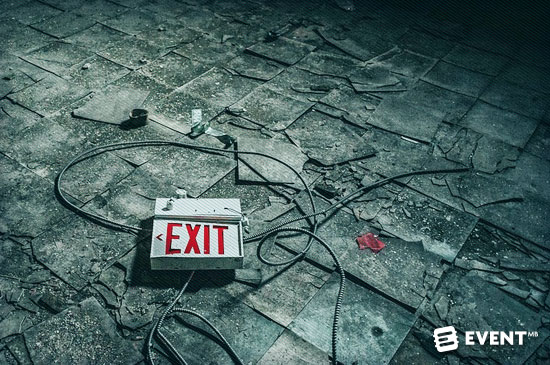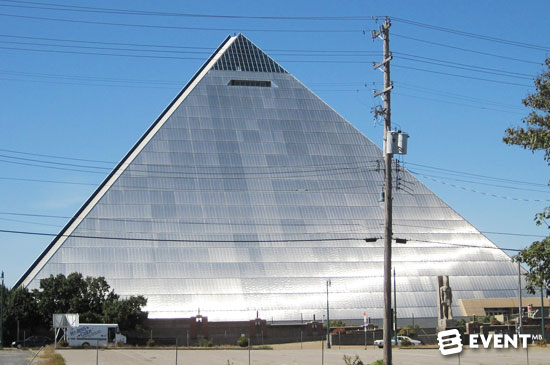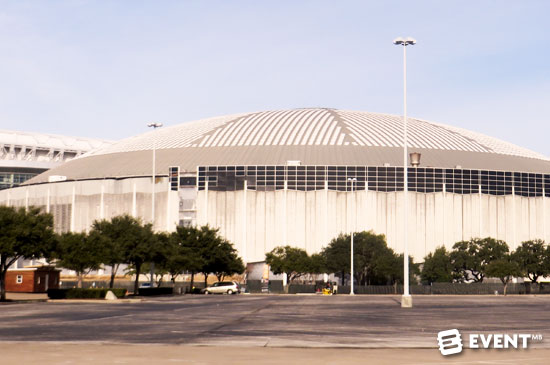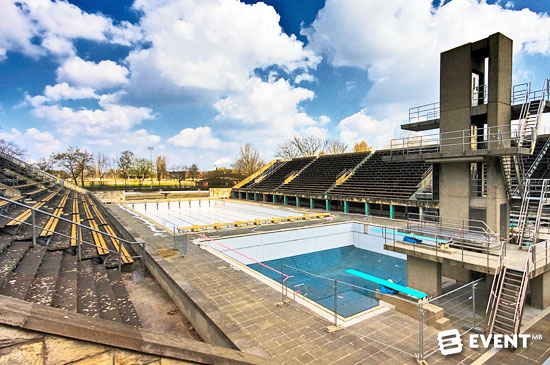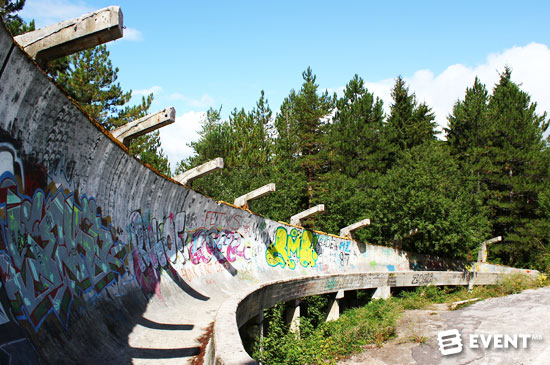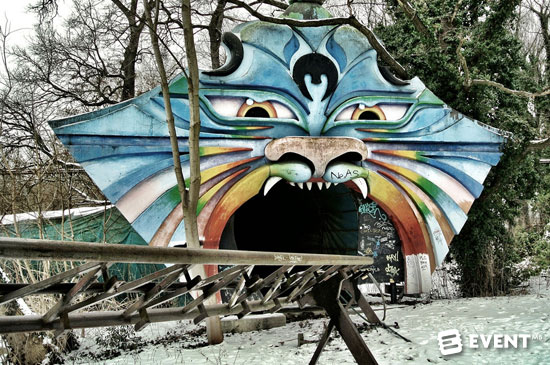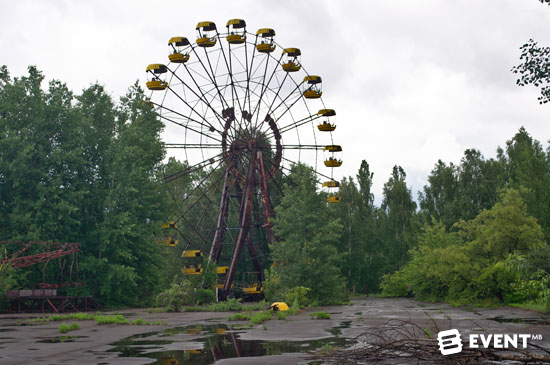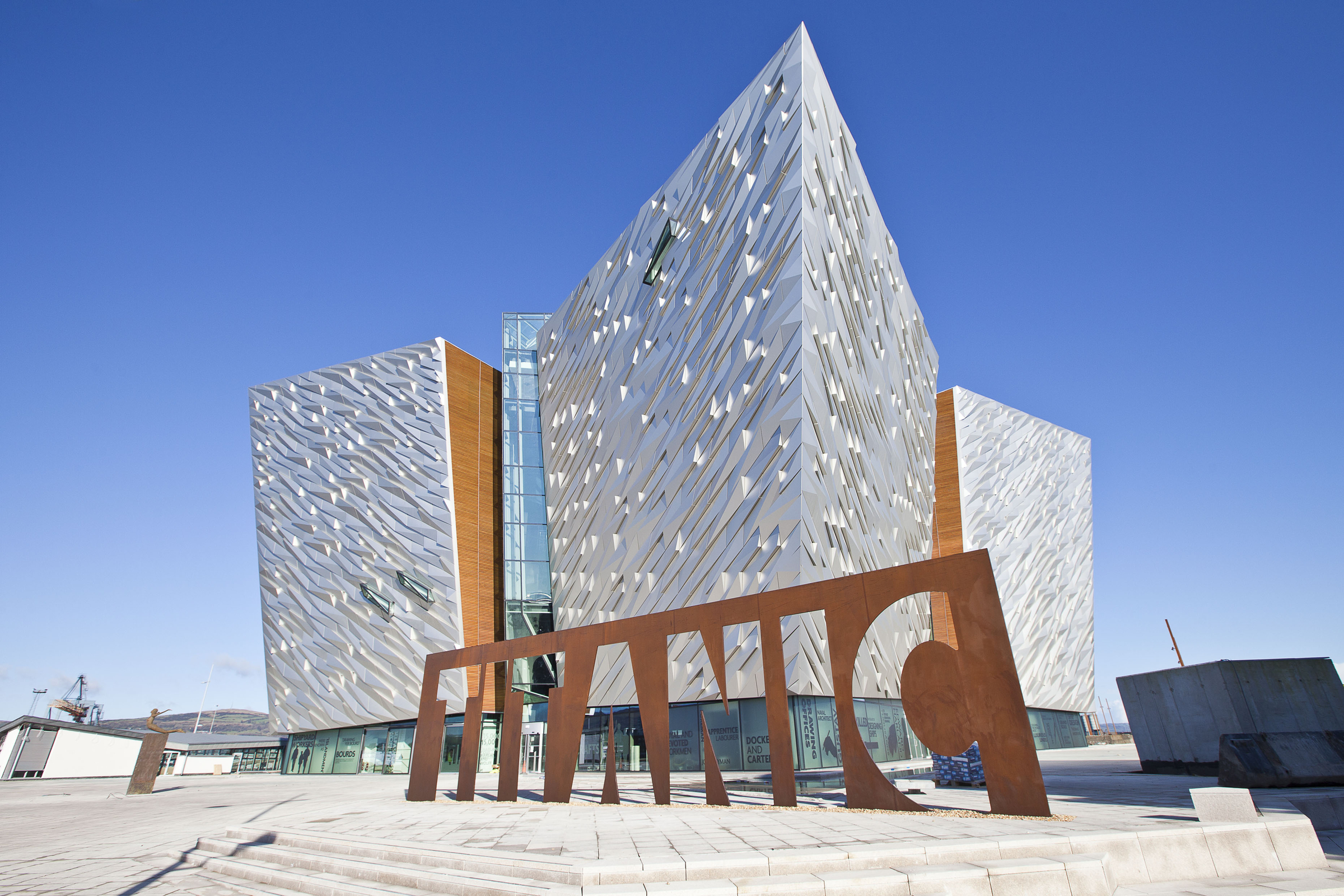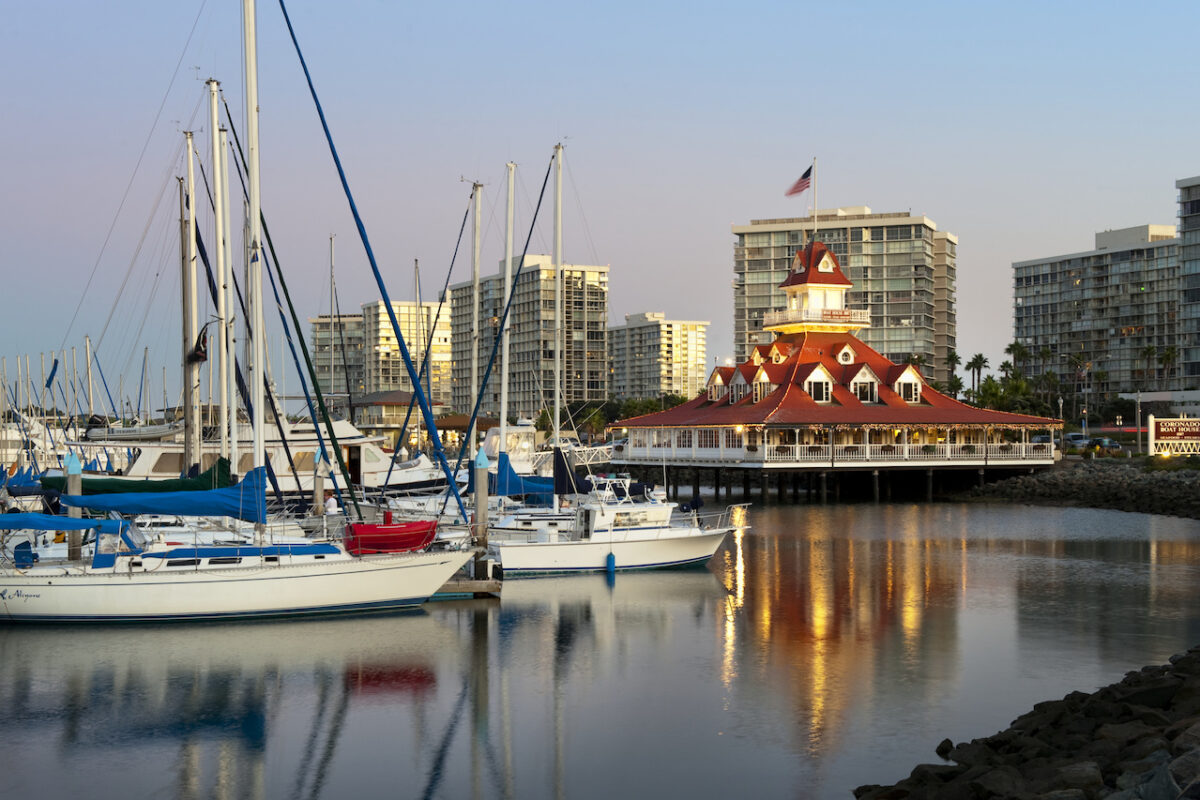Skift Take
What happens to buildings and venues that are created for an event or purpose afterwards? Can an abandoned event venue be rejuvenated and what happens to them once everyone has left?
Whether it is the Olympics, a small conference center or an amusement park, event venues contain an element of history, some become re-used, some fall into a sorry state but all of them cost a great deal to build in their day. We take a look at some of the most historic abandoned venues around the world, what they are like today and if there is any hope of them being re-used.
-
Pyramid Arena
Located in Memphis, Tennessee, and also known as the Great American Pyramid, it was built as a sports entertainment arena with a capacity of 20,000 and was used for men and women’s conference basketball in 1993, 94’, 96’,97’, 2000 and 2003. Also the venue of concerts including Mary J. Blige’s “Share My World Tour”, the last concert of Bob Seger & The Silver Bullet Band and the 25th anniversary of the death of Elvis Presley.
After flooding and falling into disarray and the NBA Memphis Grizzlies leaving to go elsewhere the pyramid arena closed for the final time in 2004. In 2015 it was turned into a shopping megastore with an outdoor complex, was renamed Bass Pro Shops and is now open to the public.
-
Athens 2004 Olympic Swimming Complex
The 2004 Olympiad in Athens, Greece saw the return home of the Olympics for many as it originated in Greece around 776 BC. However, today over 12 years on, the swimming complex has been dried up, overgrown and covered in graffiti as the Olympics are now a distant memory there. It is not just the swimming complex that comprised of an outdoor pool, synchronized swimming pool and the indoor diving pools that are no longer in use but also much of the rest of the Olympic complex. The softball stadium is overgrown as well as the outdoor seating has been rotted away. Most of the stadiums externally and internally have been left derelict from lack of use and even the Olympic fountain has been defaced.
-
Haymarket Building, London
Previously the headquarters of the fashion label “Burberry” this building on Haymarket in Soho, London still has the Burberry carriage-clock on the exterior but is a hospitality venue going to waste. Used in the London 2012 Olympics as Monaco House it served as the hospitality house of their 6 strong team during the games but since then it has barely been forgotten. The grade 2 listed building has large open spaces which have been used for conferences, AGM’s and launches and the upstairs bedrooms were fit for purpose during the Olympics. Despite being abandoned for several years it was bought by a private investor in the hopes of converting into residential properties.
-
Houston Astrodome
This 70,000 seat domed sports stadium was debuted in 1965 as the first of its kind in Houston Texas and was the home of major league baseball and national league football and basketball teams alike. It was also a rodeo and livestock show venue until 2002 from the time it opened and was the first sports stadium to have artificial turf, leading to the well-known Astroturf we have today, which in part, led to it being listed in 2014 as a Nationally Registered Historical Place. In 2013 it was partly demolished having been primarily abandoned since 2006 and was declared unsafe by the Houston Fire Department in 2008 and subsequently closed. To avoid demolishment, plans were approved in September 2016 to turn the dome into an underground parking facility.
-
Carolina Theatre
This theatre in Charlotte, North Carolina was considered a grand public hall and was the first air conditioned building in Charlotte at the time when it opened in 1927. It saw the likes of music, plays and celebrities such as Elvis Presley, Bob Hope and Ethel Barrymore take to the stage until 1978 when it was abandoned and has fallen into disarray. For over 35 years the venue withered away resulting in some of the upper tiers being demolished as a safety hazard and led to a proposed grant to restore the theatre in the early parts of 2016 with no word yet on whether it will or will not be approved.
-
Stion Za Luzankami
This abandoned, vacant and overgrown football stadium in Brno, Czech Republic once housed 50,000 people and was home of the FC Zbrojovka Brno football club. It opened in 1953 and throughout the 1960’s and 1970’s was the largest stadium throughout Czechoslovakia but was forced to close in 2001 after it did not meet the FIFA criteria and as a result the Brno football club had to move elsewhere.
Due to financial restrictions, the club could not make the necessary reconstructions and therefore they did not return which has led to overgrown trees and bushes in the stands as well as homeless people seeking refuge within its walls. In 2015 a crowdfunded group of volunteers managed to clean up the stadium for a final match to be held in honor which re-sparked the interest in the stadium itself. While it is still vacant and not being used, plans were submitted in 2016 to refurbish it.
-
Berlin Olympic Village
Home of the 1936 Berlin Olympic summer games, Germany created a large site on the western edges of Berlin to accommodate the athletes at the first televised Olympic Games. The village included the dormitories, gym, track, swimming facilities and a large dining hall that have all been abandoned since the Second World War. Berlin did not take into account the sheer volume of people that would be in and around the compound during the games and many of the buildings were left damaged from the outset.
After the Olympics, Hitler converted the Olympic Village into a military camp for the Soviet Union during World War Two and since then the compound has decayed and been left abandoned. Signs of the Olympics are few and far between since the conversion and military usage but areas such as the dried up aquatic center still remain.
-
Silverdome
This sports stadium was opened in 1975 with a capacity of 82,000 seats in Pontiac, Michigan and was the largest of its kind until 1997. It served as an entertainment venue for both the NBA (basketball association) and the NFL (football association) and served as the home ground for many sports teams. It also acted as a concert and entertainment venue that saw wrestling and musical talents perform there all the way up to 2002.
By 2006 it was forced to close as the regular home team had moved on and it subsequently led to the decay of the pitch and stands. In 2013 the roof was deflated and removed and even though it was sold on, it has been left to the elements to be overgrown and destroyed by nature with no plans of refurbishment in the future.
-
Eastown Theatre
A once proud 2,500 seat theatre in Detroit, Michigan was built as a movie theatre and was only one of 4 in Detroit at the time. It was an opulent theatre but was forced to close in 1969 as the rock ‘n’ roll scene took over and it was no longer relevant. After a mass overhaul and more simplistic approach it was converted into a rock venue that saw the likes of Fleetwood Mac, the Who, The Amboy Dukes and Steppenwolf perform. Some even recorded their live albums there.
After three decades and a lot of scandal surrounding drugs, overcrowding, health code violations and safety issues, Eastown theatre was closed, rejuvenated and opened as a jazz hall (and then later as a nightclub) and it became a symbol for those living there until the 1990’s when it became an impromptu site for raves by many young people. After a fire broke out destroying much of the upper apartments and the unsuccessful sale attempt of the church who owned the building it was put at the liberty of the scrappers in 2014 and was deemed unsafe and demolished in November 2015.
-
Sarajevo Winter Olympic Bobsleigh and Luge Track
The 1984 Sarajevo Winter Olympics in Bosnia saw the huge track built on the Trebevic Mountain so that it overlooked the city itself and created stunning views and a combination between man and nature. One of the few Olympic venues that was used once the games ended, the impressive track was used for competitions and world cup races. Unfortunately, due to the Bosnian War in 1992 the track was used during the Siege of Sarajevo by the Bosnian Serb forces as an artillery position and led to breakdown of some of the track and visible holes and destruction.
Signs of visitors is apparent with graffiti along most of the track which although is still intact, it is only used for leisure cycling and tourists and Mother Nature has since taken over and overgrown many areas. Plans to renovate and rejuvenate the track and surrounding area have been proposed as a potential hosting ground for the 2019 European Youth Olympic Winter Festival.
-
Fallside Hotel and Conference Center
Originally built in 1957 as an Inn, in Niagara Falls, NY, this hotel quickly expanded to include a ballroom, conference center, tennis courts, bar/lounge and a pool. The hotel itself sat on the former property of the Shredded Wheat Company that was a large part of Niagara Falls in 1902 and led to the landscaped grounds that were part of the hotel.
After being poorly taken care of, many concerns over flooding, poor structure and bad reviews it closed in 2009 and it quickly fell into further disarray. In 2014, two thirds of the complex was destroyed to become a part of the Hilton Hotel franchise with a 183 room and 8 storey newer hotel taking its place.
-
Spreepark
This old amusement park in Berlin was once the site of a major attraction venue that has since been abandoned. Opening in 1969 as a carnival and then being bought and expanded in 1989 to become a larger western-themed amusement park, it was a main German attraction that saw visitors of up to 1.5 million per year. Things remained successful until 1999 when the lack of parking and raised admission fee to cover large debts saw the decline of visitors and led to the insolvency of the owners in 2001.
In 2002 many of the attractions were shipped overseas and the rest of the park was closed for visitors and left to decay. Parts of the park are still evident now as swan boats still float in the ponds and rollercoaster tracks can still be seen. In 2011 a German band used the park as a backdrop for their music video and an action scene from a movie was filmed there, but since then, even though it is still patrolled by security, it has long been forgotten and grown over.
-
Victory Theatre
After opening in 1919 in Holyoke, Massachusetts this performing arts center saw the likes of Bing Crosby and the Marx Brothers perform. This storefront movie house was named after the victory in World War One a year prior and an eagle crest was placed in front of the curtain on the stage in homage to the war efforts. After a fire broke out in 1942 it was threatened and could no longer make use of the entire stage or facilities. Some minor repairs allowed them to open and continue a daily feature film showing until it finally closed in 1979 and fell into disarray, leading to decades of water damage and deterioration of the interior.
It was bought in 2009 and a renovation project was started in the latter half of 2011 until 2013 but work stalled when the extent of the damage was revealed and it stood decaying once more until it was sold in 2015. Plans to restore and reopen the theatre for 2017 are underway so this theatre may rise again.
-
Pripyat Amusement Park
This amusement park was due to be opened in Pripyat Ukraine to celebrate May Day in 1986 and was meant to serve the 50,000 residents surrounding it at the time. While several sources cite that the park opened briefly in April, it never made it to its debut opening because the Chernobyl disaster struck only a few kilometers away from the site leading to the evacuation of most of the population.
It is one of the most common pictures seen when flying over the site or briefly visiting and while radiation levels in some concrete areas are very safe, the ground soaked a lot of the radiation and makes the mossy or grassy areas high in radiation. It has avoided some decay and many have seen this abandoned park that barely had a chance to open as a symbol of things that were lost in the Chernobyl disaster after the evacuation.
-
Hulme Hippodrome
Opening in Manchester, England in 1901, this theatre staged dramatic productions and performances and connected via an arcade to a larger company headquarters of W. H. Broadhead, who at the time were a large theatrical empire. It was used until the 1960’s as a theater and then subsequently a bingo and town hall venue until it closed for the final time in 1988.
It has since been abandoned and left to decay in most areas of the theatre and the upper tiers and large amounts of seating have deteriorated from disuse. It was bought in 1999 and infrequently used for services in the foyer but has been primarily disused since.
In Conclusion
As you can see, the size of the event does not always guarantee that they will be in use or maintained because for many event venues the ongoing maintenance cost is simply too high. These are some of the most popular abandoned event venues, how and why they fell into disuse and what has become of them now. Whether for mega events such as the Olympics or music theaters and sports stadiums it is vital to have solid and realistic legacy planning before any building work is commenced.
